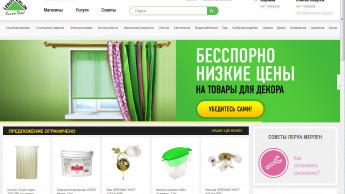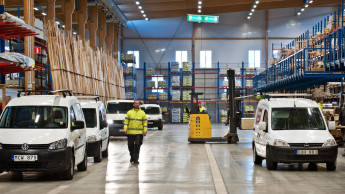

deep insights, facts & figures

Consumers in Europe are continuing to invest in their homes. But they are getting more cautious
A market volume moving upward but buying intentions tending downward: one way of summarising the situation in the DIY market in Europe as perceived by the European Consumer Barometer 2012. Being published annually, the survey offers comparability along the time axis. It must be said, though, that it also has perceptible weaknesses. The most serious of these is that Britain, of all countries, is not among the eight surveyed for the DIY market (twelve countries are investigated altogether). In seven out of eight countries the authors ascertained that the respective market volume was growing. The highest such growth was the 30.8 per cent recorded in the Czech Republic. The survey also shows that Portugal suffered a decline of 5.3 per cent. Here the comparability of the results from the individual countries is revealed as the survey’s second weak point. Market demarcations (DIY retail, builders’ merchants, other channels of distribution) are not clearly specified, so that a lack of clarity is to be expected here. Nonetheless the Consumer Barometer provides sound pointers and offers a wealth of data from which trends and tendencies can be deduced. For it doesn’t just analyse statistical material; rather, 6 500 consumers in Germany, France, Britain, Italy, Poland, Portugal, Romania, Russia, Slovakia, Spain, the Czech Republic and Hungary were questioned on their consumer habits and buying intentions. And these look somewhat restrained. Only in the Czech Republic do more people want to purchase more DIY store products in the next few months than previously (36 per cent), otherwise the figures are slightly downward, from 23 to 24 per cent on average. Despite the uncertain economic situation the middle classes in Europe – the emphasis in this year’s survey was on this group – are not losing their propensity to consume, though they are adapting their buying behaviour to the current situation. Here the frequently mentioned movement back to the home can be expressed in numbers: house alterations and renovations number among the top five buying intentions, where they account for a share of 37 per cent. In Germany, for instance, a jump from 22 to 49 per cent was registered, while items related to the house or home range well above the European average in Hungary, Poland, the Czech Republic, Slovakia, Russia and Romania. It is possible that some catching-up is being done here, after consumers had to save more in the past. For apart from Germany, Italy and Slovenia, a…
Related articles
Read also

 Menü
Menü











 Newsletter
Newsletter